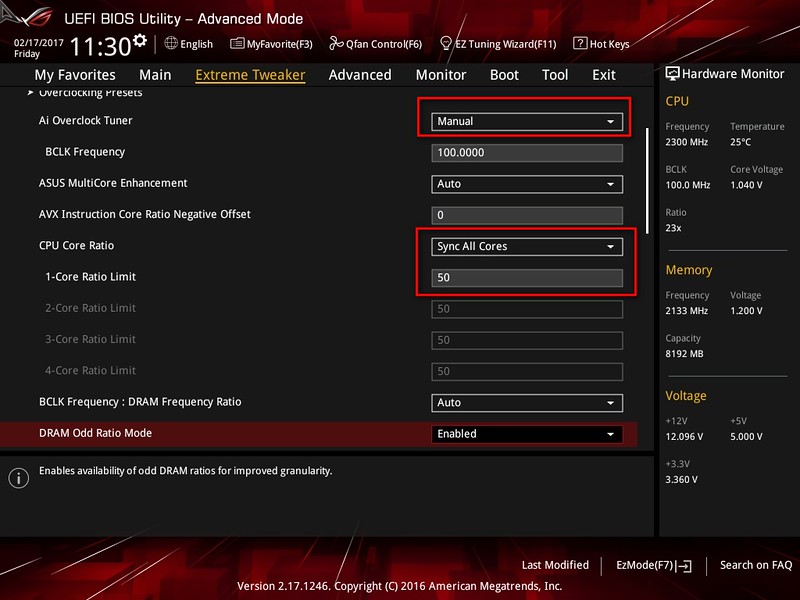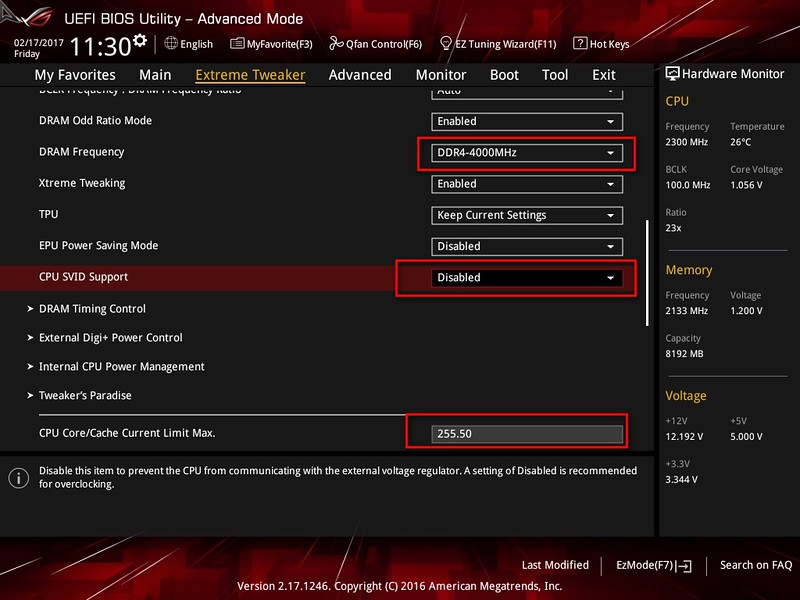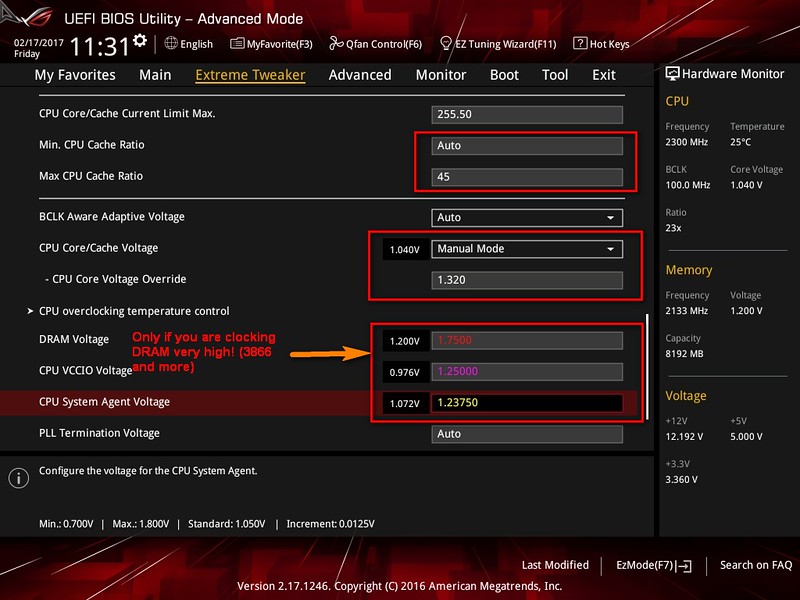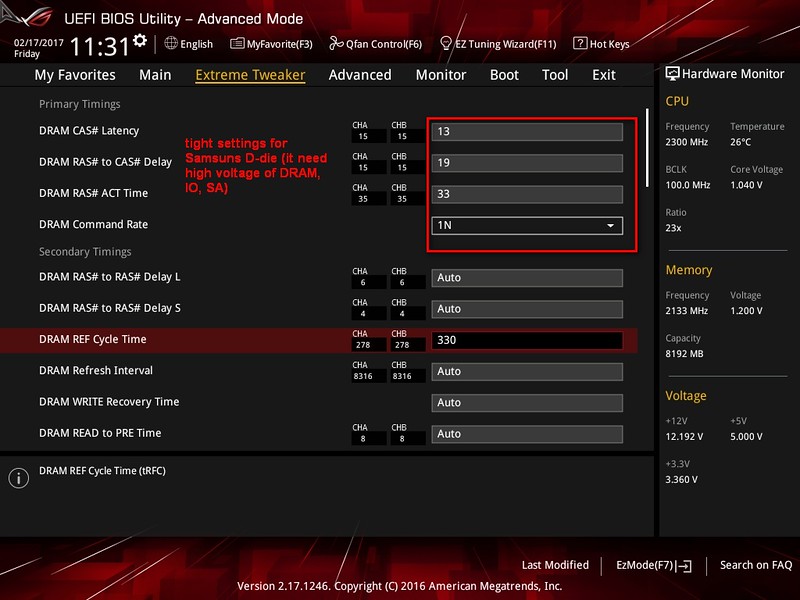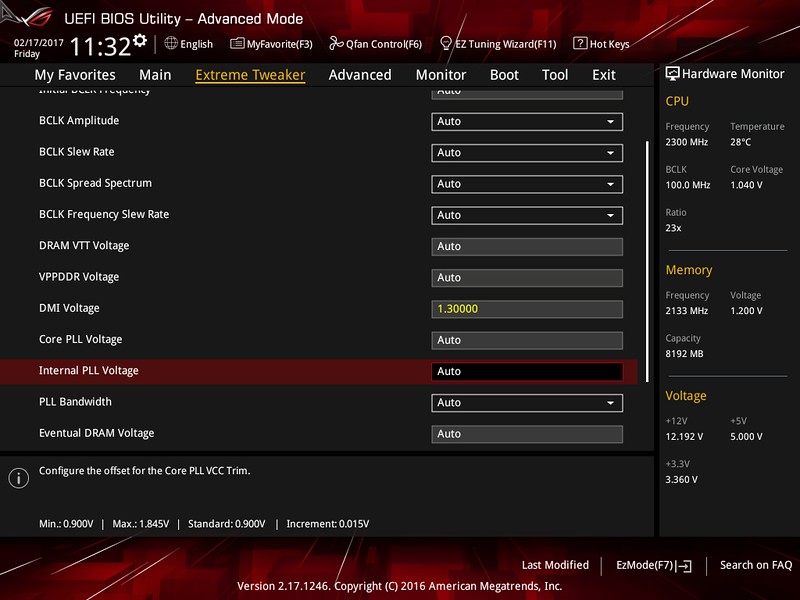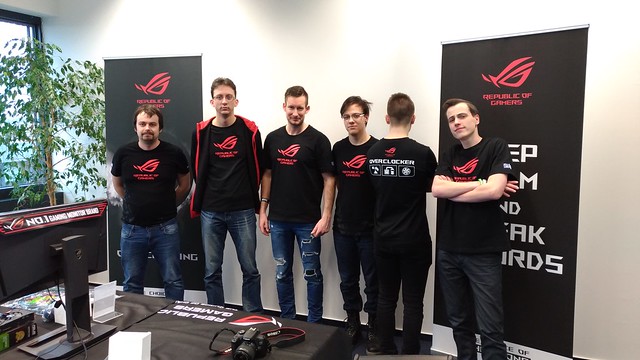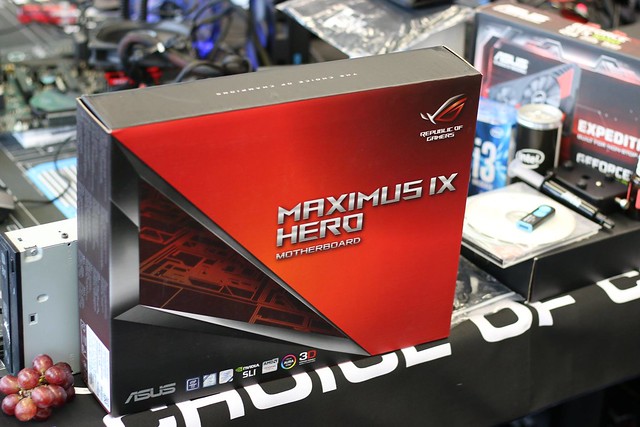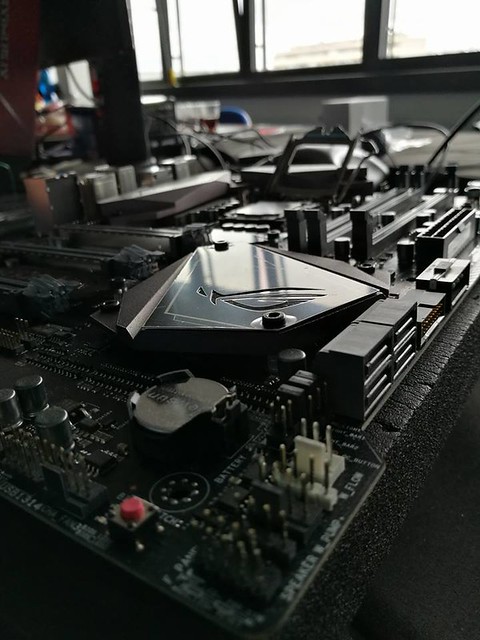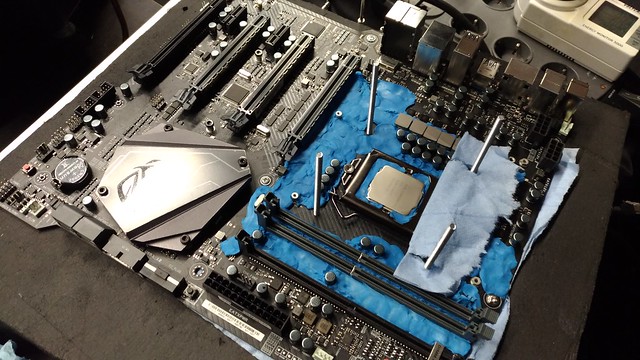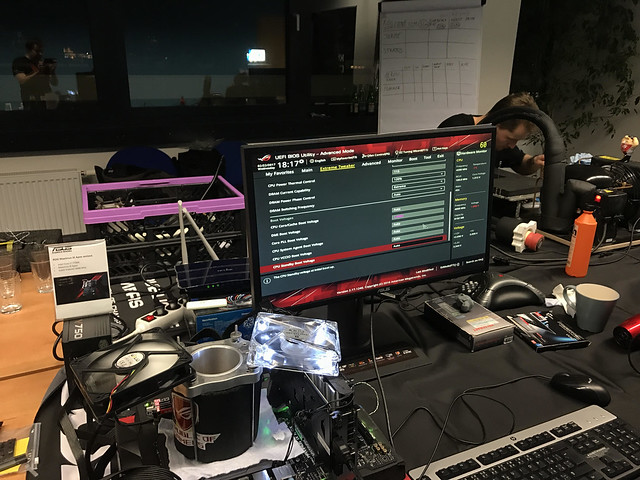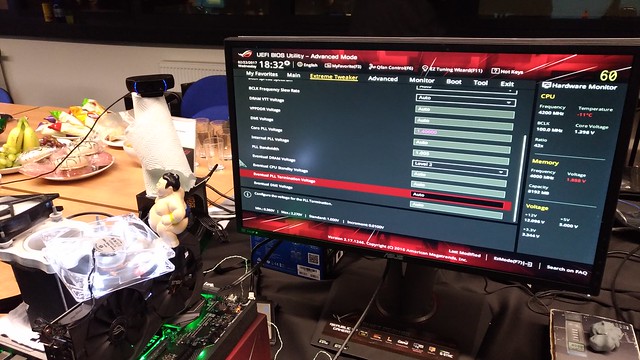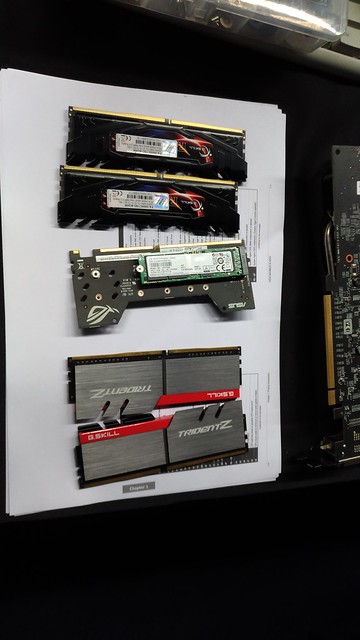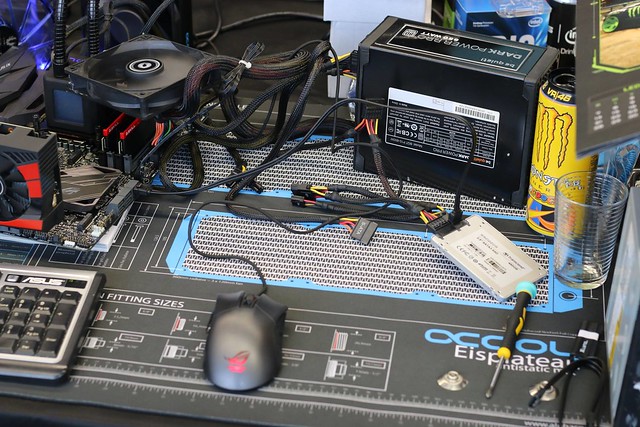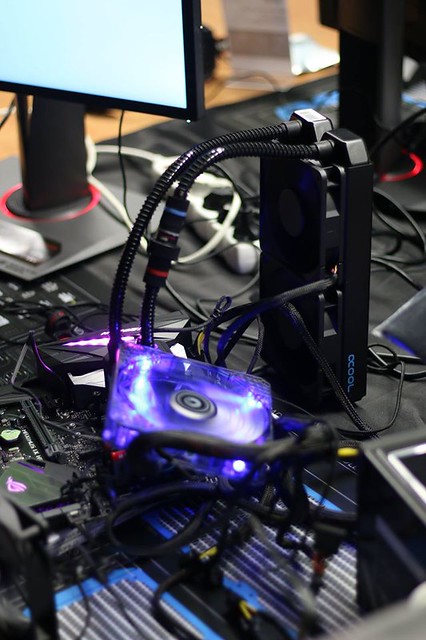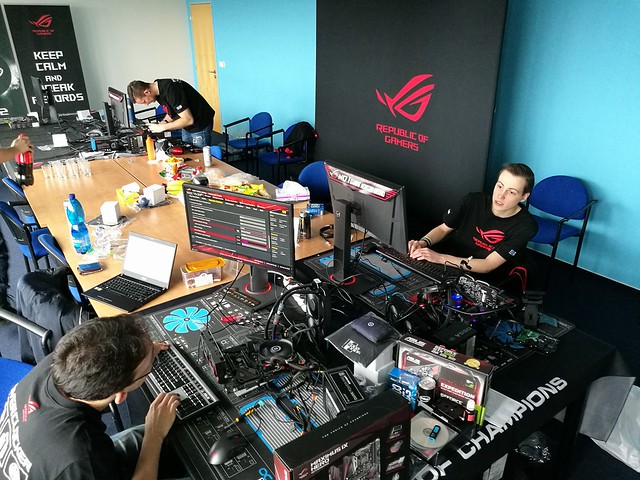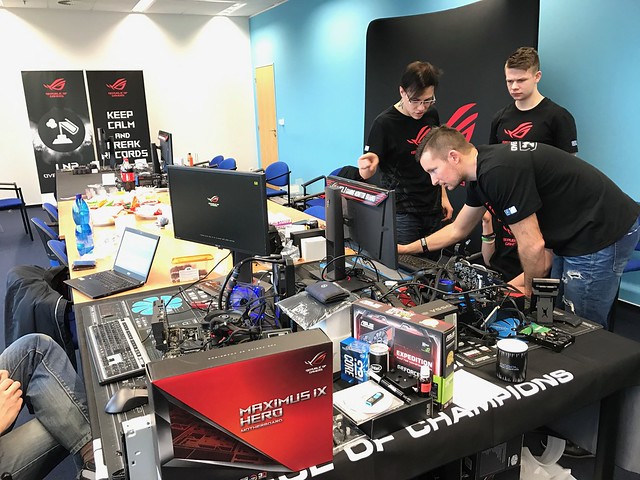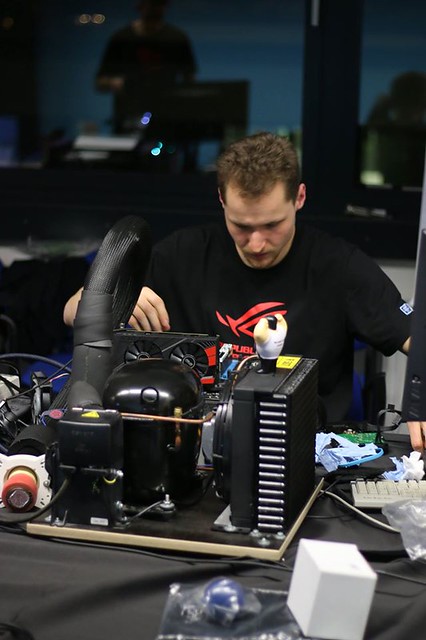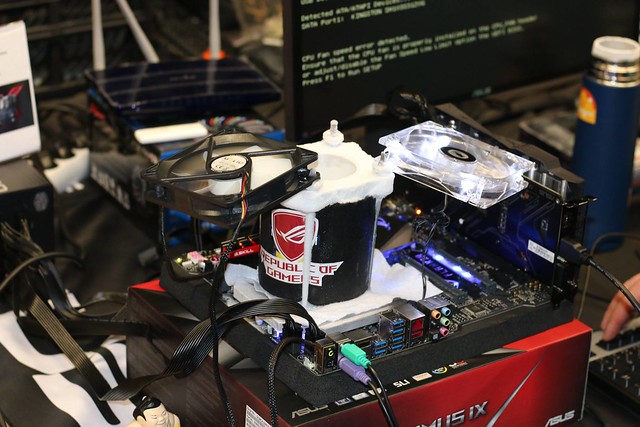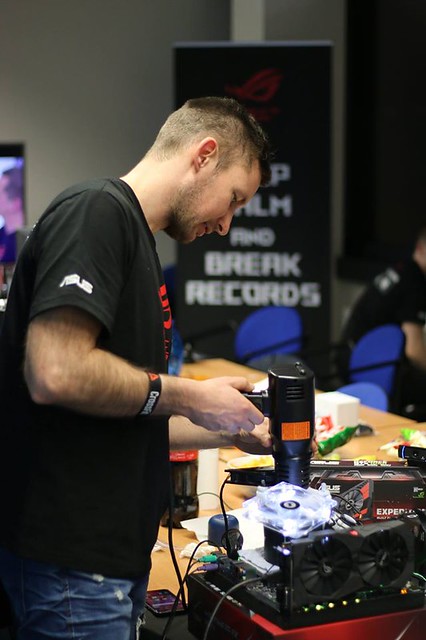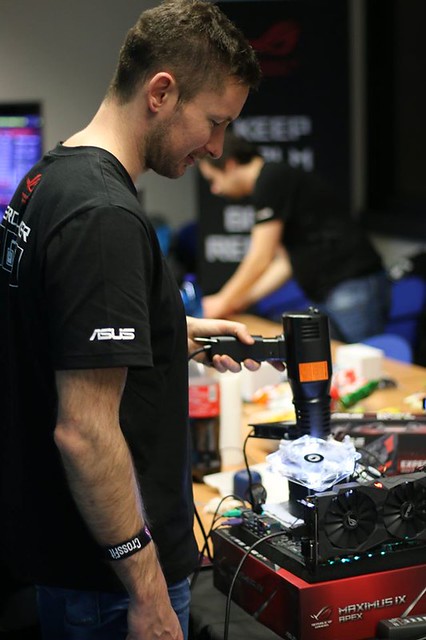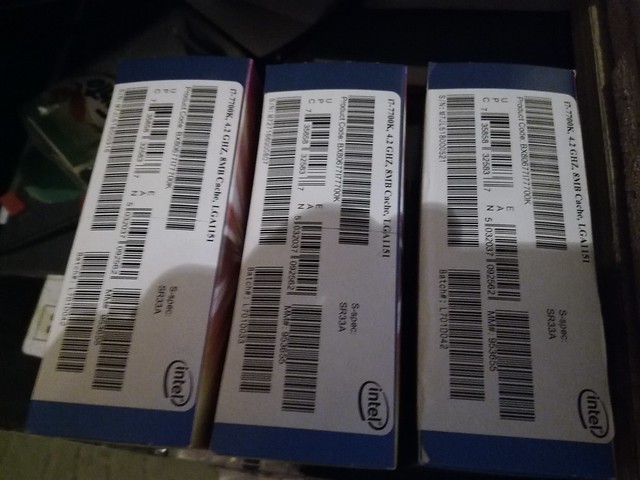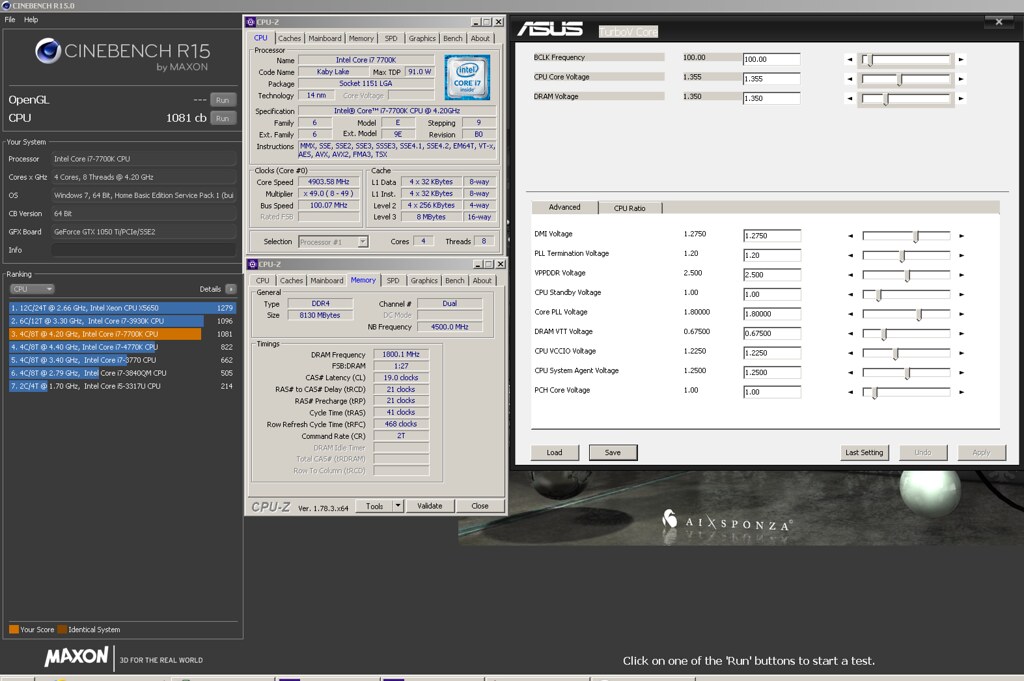- 已加入
- 2/25/10
- 訊息
- 393
- 互動分數
- 14
- 點數
- 18
- 年齡
- 45
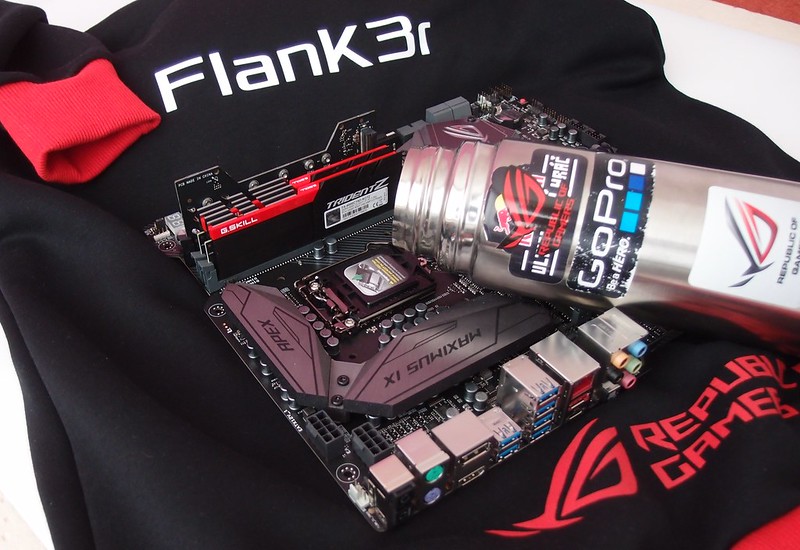
introduction
Behind many waters, far far away in some land...there was engineering Office. And there few smart people, put their heads together and created ROG hardware for enthusiast and overclockers:) It was more than 10 years ago. LOng time ago until last generation the "Extreme" products were focused for LN2 directly. Others ROG boards could work very well with LN2 also, but Extreme was something more. DRAM switches, PCIe switches, voltage points etc...

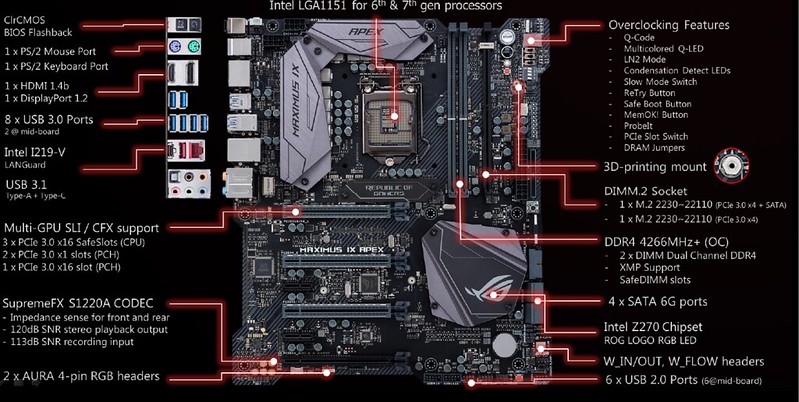
However, this year in January was presented new series "APEX", which functionally replaces Maximus Extreme. To Maximus Extreme will include other water - literally :)
Apex is motherboard for LN2 with all stuffs inside. Even the original design was so geeks that the motherboard did not have all audio tracks. Because for hardcore overclockers is audio useless thing. Signal interference. But afterall, the board looks like looks and has it audio part SUpremeFX.
CHIPSET
Let's look at the chipset itself. Intel introduced a trio of chipsets for termination field: Z270, H270 and B250. Simplifield difference is in the number of PCIe lines in southbridge and therefore other support M.2 SSDs (explained later), support for dual graphics cards AMD/Nvidia, the number of USB 3.0 / 3.1, and even according to the manufacturer's plate.
But we are focused at Intel Z270 and concrete at Maximus IX Apex
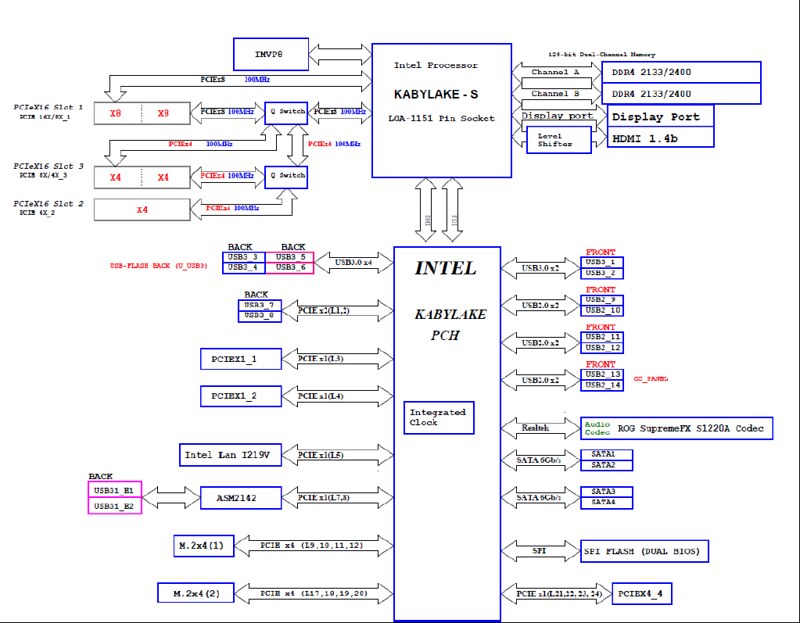
general characteristics of chipset Z270
- memory support 2400 MHz DDR4
16x PCIe 3.0 lines in CPU
extra 4 PCIe 3.0 lines in PCH compared to Z170
Dual Optane support - up to 2x M.2 SSDs NVMe/RAID
10x USB3.0
6x SATA
Note that Apex has dedicated some USB lines for special functions such as keybot. At Z270 chipset u can run two M.2 PCIe in NVME protocol mode. In H270 also (one of the discs working at the speed X2), but B250 has not (one be in mode PCIe, second must be in SATA mode). If you will to use the M.2 SATA disc, you should know that the communication part is shared with certain SATA connectors, it can always check in advance before plugging the system. Generally it can say that Z270 is a modern and enjoyable chipset, where the next 4 PCIe lines are are useful.
Motherboard description in theory
Although the board is equipped mainly for extreme overclocking, also has benefits for watercooling setups.

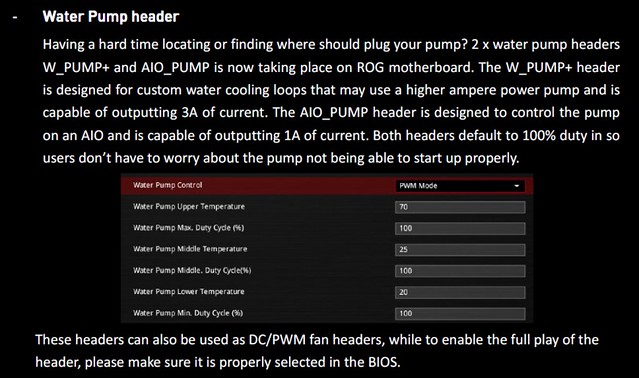
These are connectors for AIO or for classic watercooling pump and flowsensor and tempsensor of IN and OUT also. Very smart solution.
Water cooling is controlled with 3A fan header, AIO has "only" 1A. Connectors are useful Konektory lze použít i traditional way for PWM/DC control.
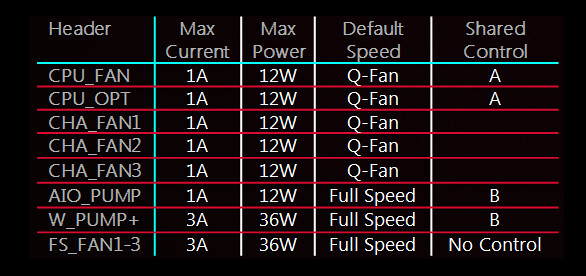
The fans power plan.
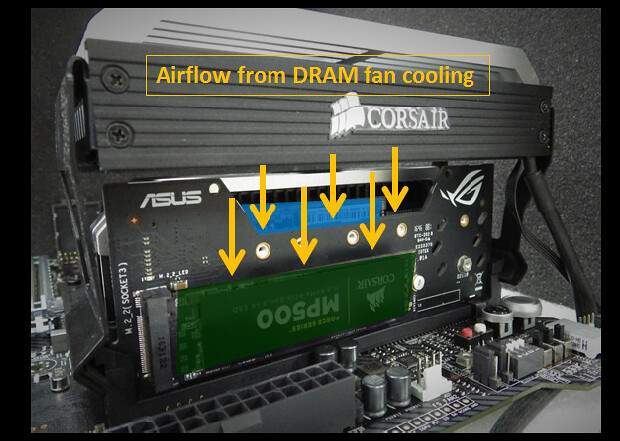
Now very special DDR slot. It is designed for devices that support installation of two M.2 drives. But why to inside DIMM slot? Better cooling capabilities and commonly better access to hardware components. You can also put on device RAM cooler, which then cool down M2 SSDs alone.
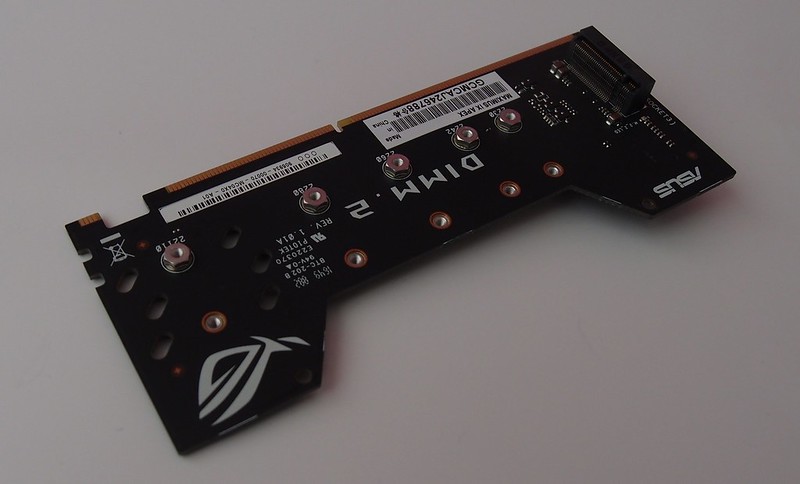

At DIMM2 device we can see few vents, those used for air flow, which can supply CPU fan. Second slide.
DIMM2 slot is on the board identical to DDR4, but still makes it different safety plug, so that even a beginner can not functionally obfuscate.

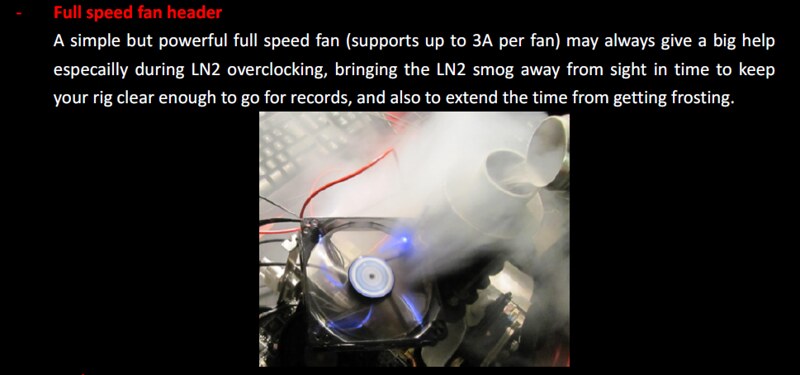
Finally something about extreme OC :). Special new LEDs are a great innovation with detection of condensation! Very helpful. Condensation is the biggest enemy of extreme overclocking. This motherboard has 13 detection sensors. 3 are near the CPU and others around DIM slots, and PCIe. OC zone of motherboard include buttons start, reset, slow mode, pause, CBB switch, retry button, safe button, LN2 jumper, slot PCIe switch, jumpers for activation/deactivation DIMM slots for DRAMs. Take a look at two white 4-pins for fans, these working at full speed
LN2 mode jumper = customized settings for LN2, best way enabled it between -100 až -120 C
Slow mód přepínač = switch for CPU working at low C-state (in default 800 MHz), switch off and CPU clocks jump up to maximus (sets in BIOS or in TurboV software). Useful for max validations process example.
Pause switch = hardwarová pause, PC is in pause/freezing mode, you can it cool down or heat up in your LN2 pot and after continue in hard load benchmark.
CBB switch = no more coldbootbugs
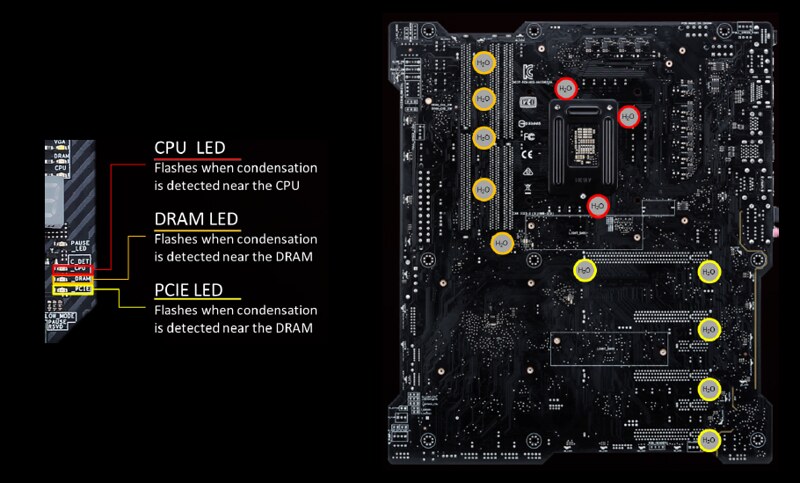
Detection points of condensation - we already know from the previous paragraph

Apex board can also support 3D printing. One bracket, eg for minicoolers for DIMM2 slot :)
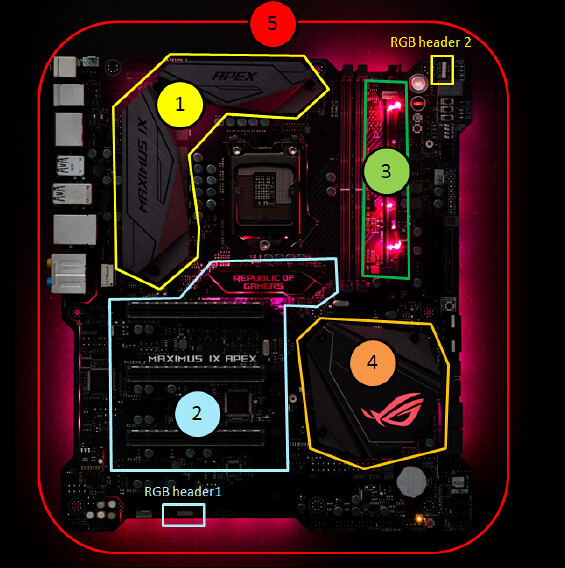
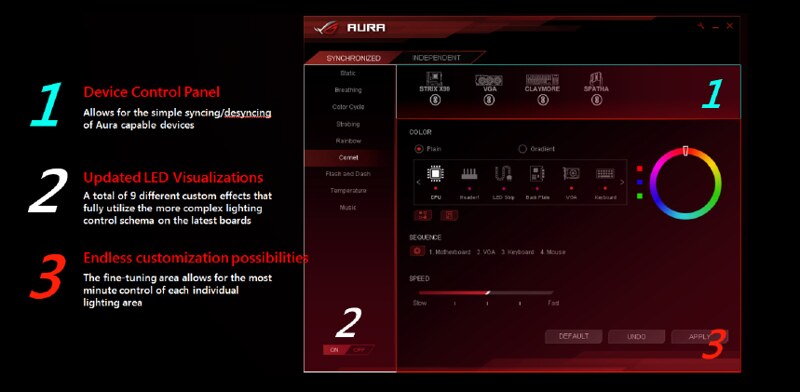
AURA is everywhere, APEX is coming with lights. With jumpers you can some of the locations turned on/off or even expand on RGB strips. AURA and AURA SYNC is just what a marketing standpoint moves the world, whether one likes it or not. Despite the software it yourself tune in color, synchronization, backlight modes ...
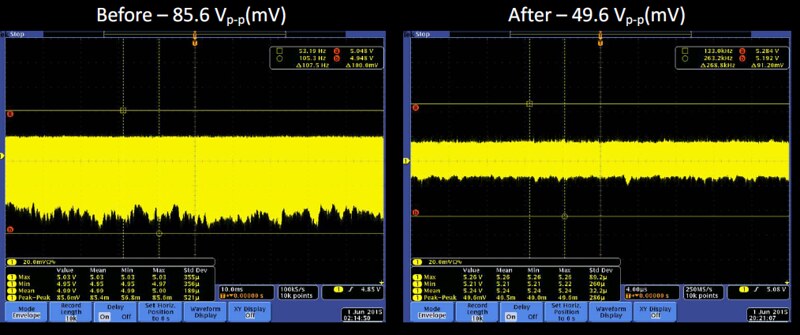
Audio Supreme FX its not only Realtek ALC1220, ALC1220 characteristic at the left and at the right is new SupremeFX, sound signal is more clear.

Interesting software, which is bundled on the DVD, however, works only with KabyLake on another PC I failed to install (Maximus VIII Hero).

The board can be equipped with individual charm, make your own logo.
Motherboard description and accessories
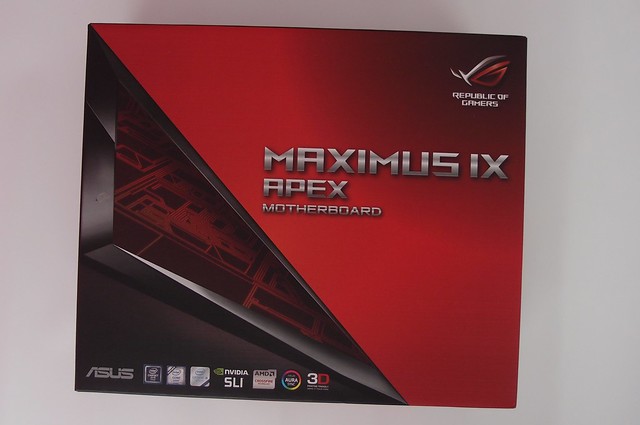

On the back of the box are then specification and label themselves boards Apex
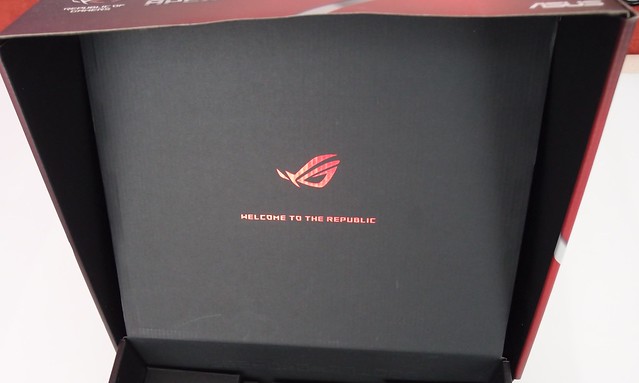
Open the box with ROG logo inside
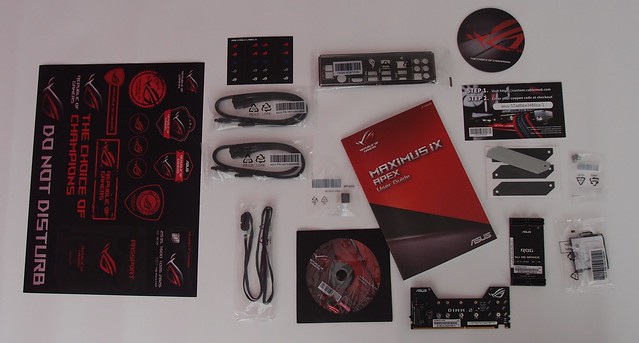
Accessories:
set of ROG stickers
small ROG stickers eg. at SATA cables
4x SATA cabels
RGB extender
IO cover
Q connector
DVD with drivers
Manual
discount coupon for the sleeve cables of PSU
ROG coaster
DIMM2 device for M.2 discs
M.2 screws
ROG HB SLI bridge
Installation pad for processor
strip for custom logo backlight
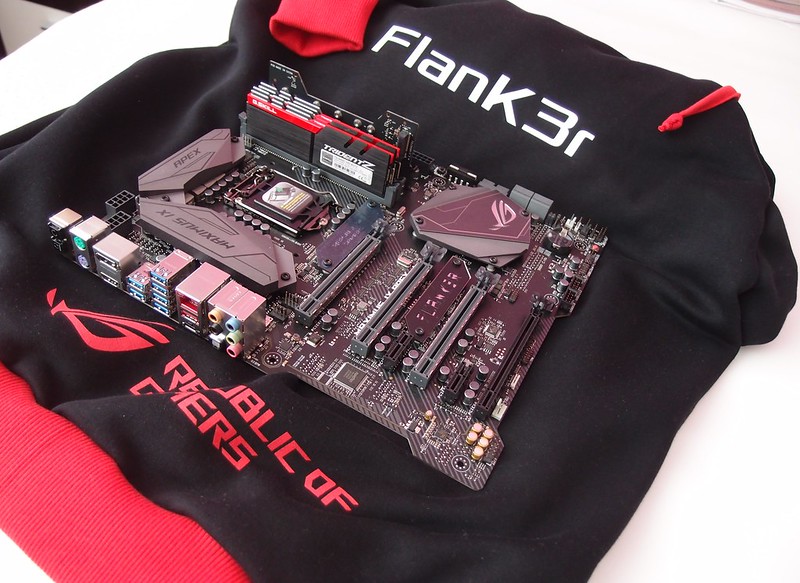
The motherboard has an atypical design, where individual corners "stretched" and linking the corners of an imaginary forms the letter "X". It stands for "eXtreme".
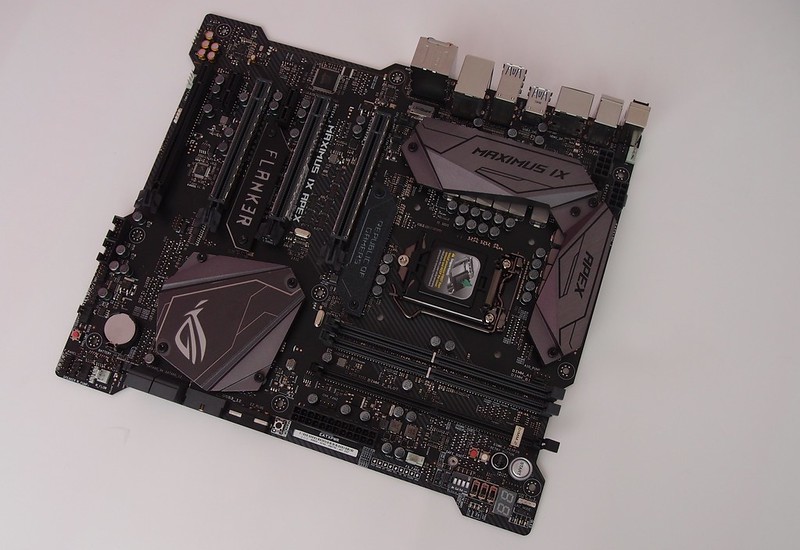
The basic layout of ATX24 pin connector and 2 x 8 pin connectors are at traditional locations. It is well-marked, which osmipin that is primary and the other is only for LN2. Board dimensions correspond with ATX format, but you will certainly be taken aback that the board has only two slots for memory. Why? Because of the extreme overclocking always achieve better results with less crosstalk, and there's two more than 4
Upper right corner belongs to the OC zone. Bottom left corner, then audio. Bottom right corner occupies classic case connectivity while the zone for water sensors and RGB. On the motherboard also find three reinforced PCIe slots for video cards. Fourth bottom is connected electrically with the south bridge (PCH). The actual distribution lines for the graphics card is either:
1x 16 PCIe 3.0 (first slot)
2x 8 PCIe 3.0 (first + third slot)
1x 8 + 2x 4 PCIe 3.0 (first+seocnd+third slot)
For PCH are shorter two PCIe 1x 3.0, ex for audio card or avermedia card.
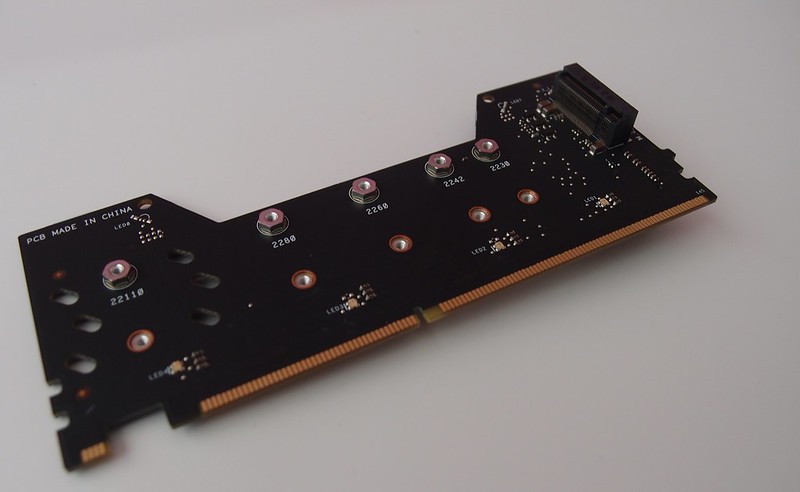

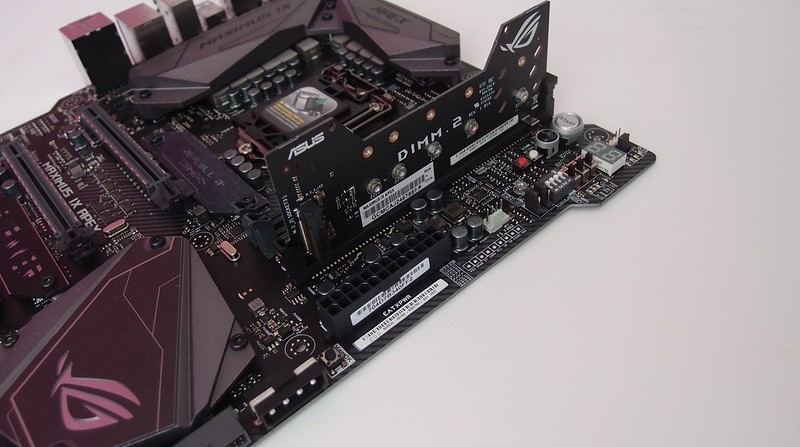
Look at the M.2 DIMM card. Put this card inside the DIMM2 slot, the slot is near the DDR4 slots. Electrically connected to the south bridge and the equipment itself can place a pair of M.2 NVMe SSDs.
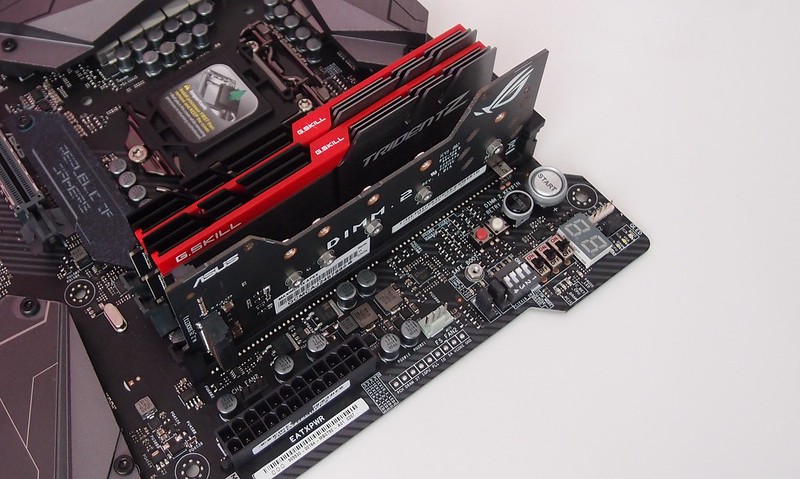
Three RAMs? Not, only 2x GSkill TridentZ and DIMM2 device.
Few details of motherboard
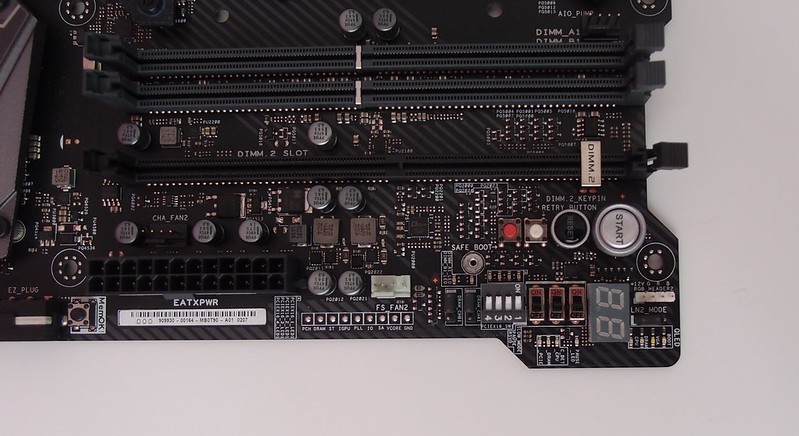
OC zone, where we find the start button, reset, display post, retry and safe button, special LN2 switches, white 4-pins for RGB LED strips, switches of PCIe slots, DRAM jumper and power VRM of memory circuit.

Passive coolers are relatively low, mounting screws only from the top, which is an excellent idea, especially for extreme overclockers. At the upper edge of the board are also connectors for fans, controlled PWM/DC itself according to the connected fan.
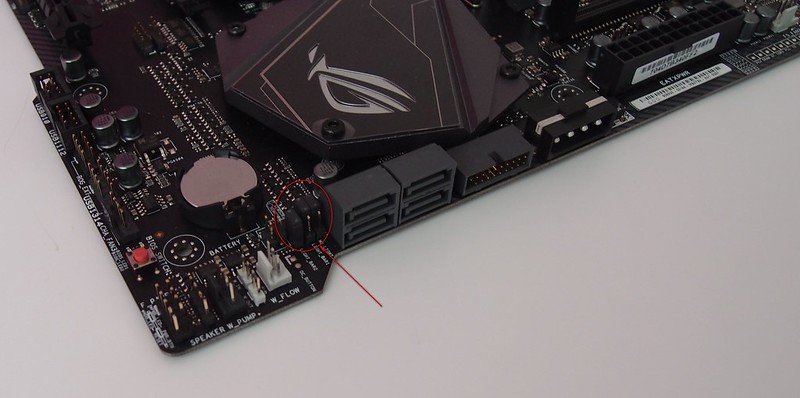
Here we can see a quartet of SATA ports, OC crazy guys dont need much of it. Furthermore, the front USB3.0 port, and extra power for PCIe (Molex). I circled section of jumpers to activate/deactivate some parts of AURA RGB lights. Also white connectors for temperature and fluid flow in wattercooling systems.

The lower part contains from left to right: front audio connector, the second RGB header, TPM port, a pair of USB 2.0 ports for connections, ROG connector I / II connector for OC Panel, fans 4-pins and BIOS switch. Motherboard has two BIOSes.
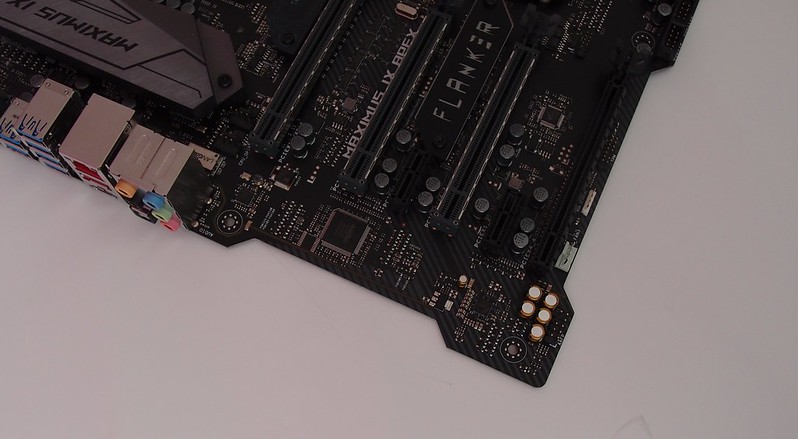
This corner contains SupremeFX audio with the FX1220. Generally it contains a chip ALC1220A, extra system of amplifiers and Japanese audio capacitors. PCB is obviously separated, due to low interference. Note also the main control chip ICs from Nuvoton (opposite the second PCIe x16 slot).
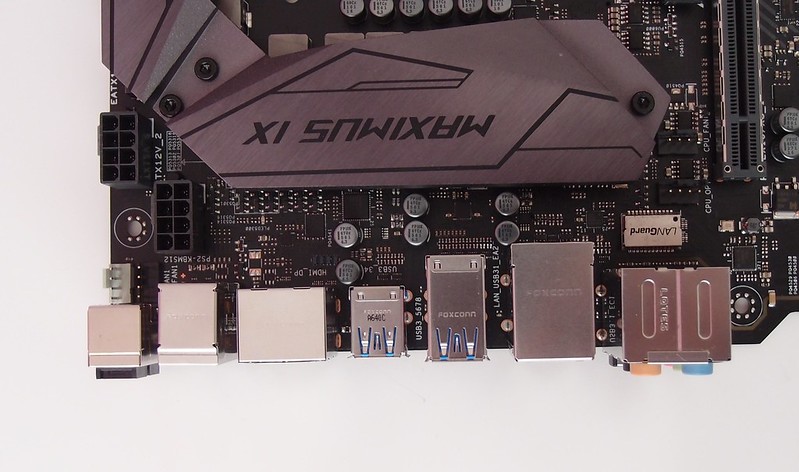
On this section are some chips for USB3.1 and HDMI. And then encapsulated chip LANguard, protecting against surges the LAN port.

IO outputs are solid. We can find a pair of PS2 ports, which is useful to extreme overclockers. Before them is still button for BIOS Flashback feature (below) and CMOS BIOS button (top button). Following DisplayPort and HDMI, 6x USB3.0, LAN, USB3.1 A + C, audio jacks.
Digital power of motherboard, VRMs

Motherboard for overclocking is definitely created at a solid level. Let's look at the VRM complex of motherboard. I highlighted in red power circuit for processor cores nad iGPU part. This CPU part has 8 digital controlled phases, without any dividers. Exactly its 8 + 2 (CPU+iGPU). Full digitally controlled, high precision using an IR chip. VR chip is framed in red (small frame).
CPU has another part called IO and SA. The power circuit is located under the logo of the Republic of Gamers, I've highlighted orange rectangle. It has two separate voltage controllers (red small squares), one for IO and the second for SA.
Power circuit for memory has separate, well-controlled digitally also. It is a two phases-and called it in blue color.
The main part of the power circuit for CPU cores is probably the most important. MOSFETs are encapsulated (sorry for my english, how to say it-integrated mosfet+drivers) and the manufacturer is Texas Instruments, named CSD87350Q5Ds. You can dismiss an insane value - current up to 400A! The OC is indeed not limited :) And despite somewhat worse useful practice properties, if necessary MOSFETs are heated to 60 C.
BIOS
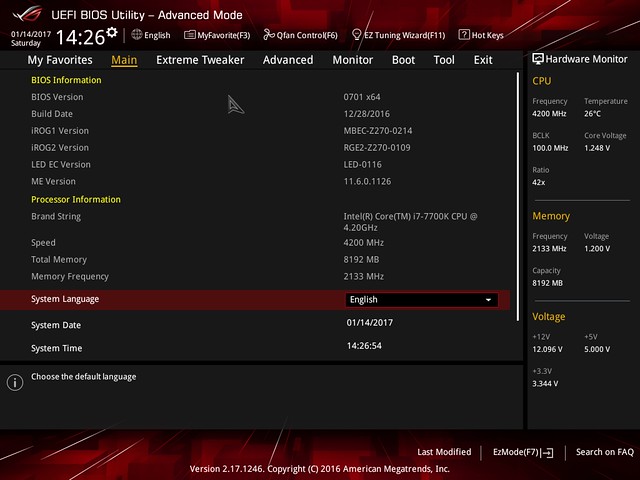
main menu

Extreme Tweaker
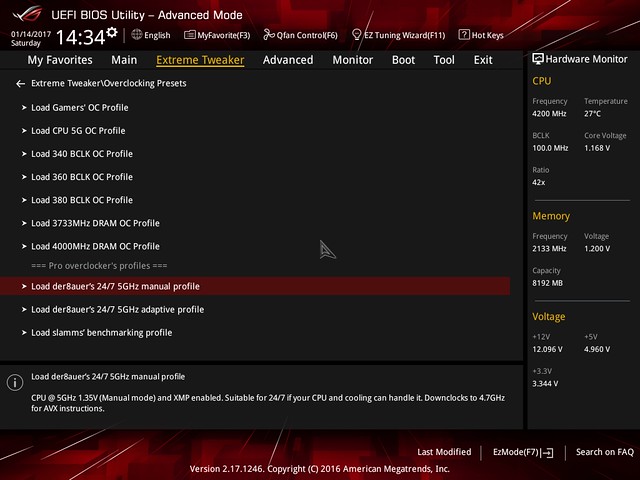
profiles
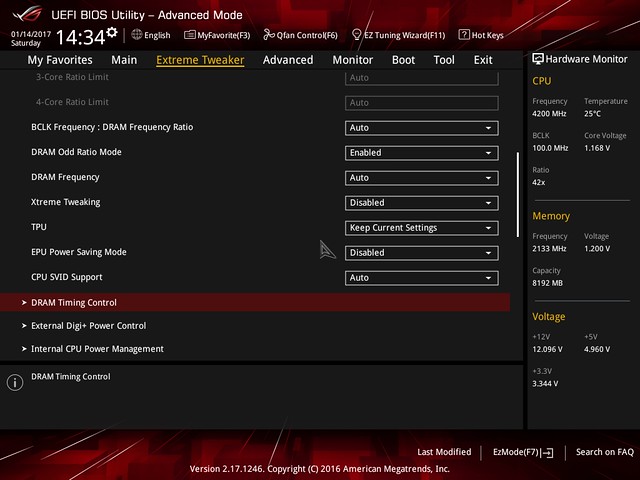
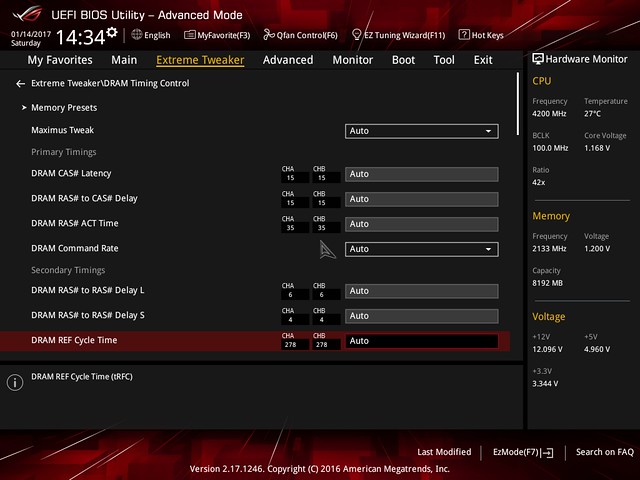

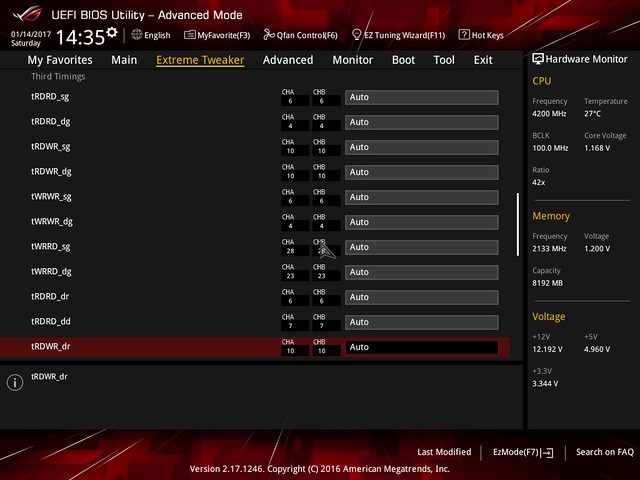
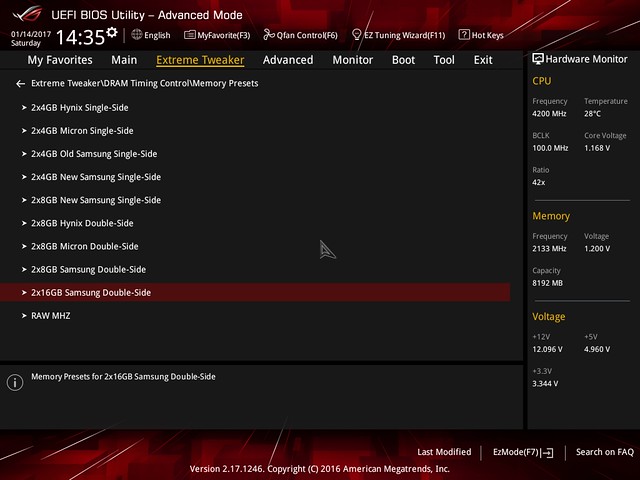
RAM settings
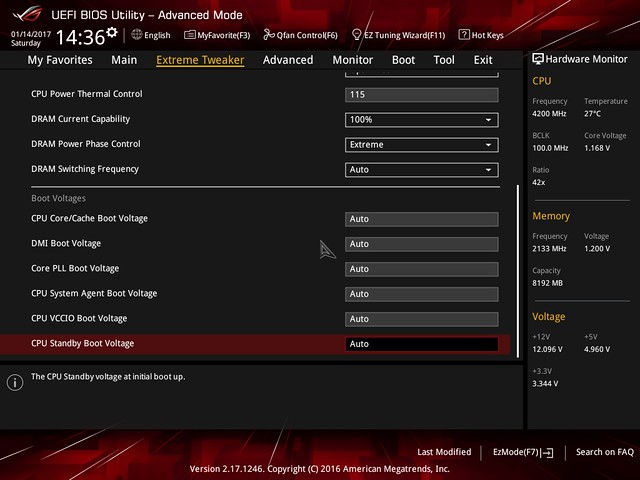
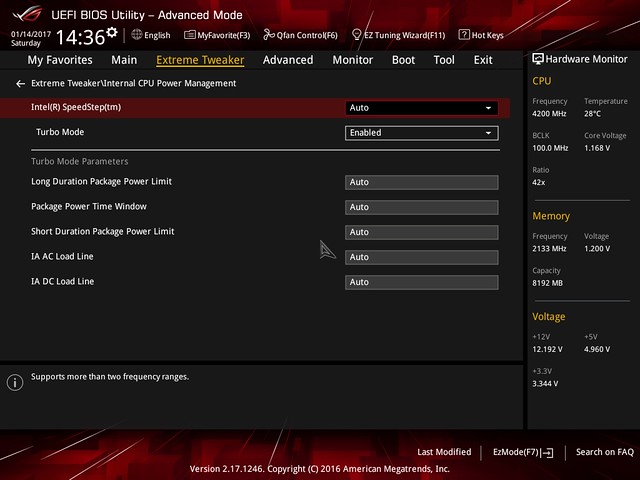
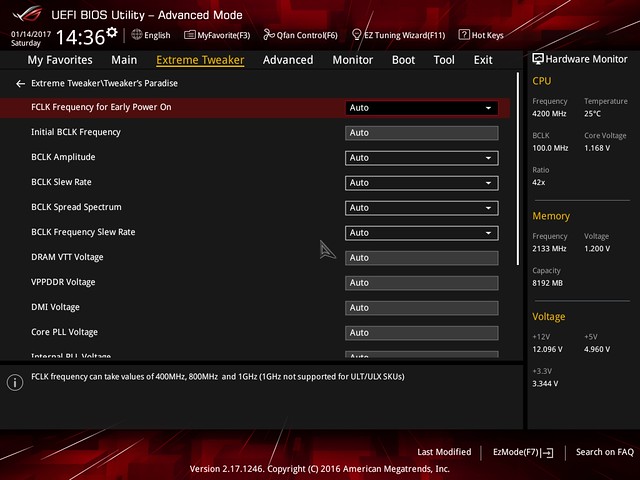
Extreme Paradise :)

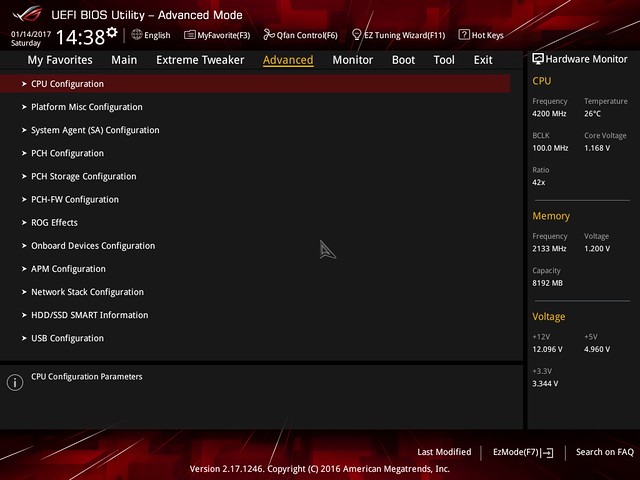
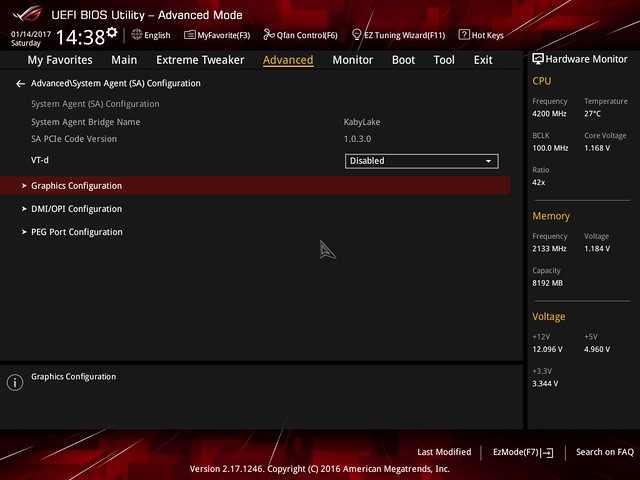
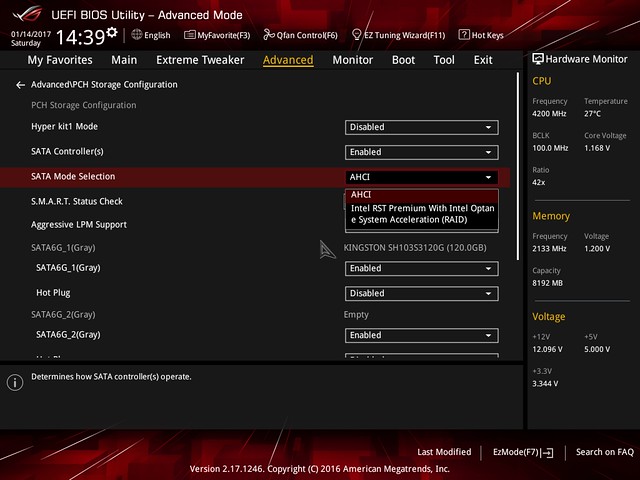
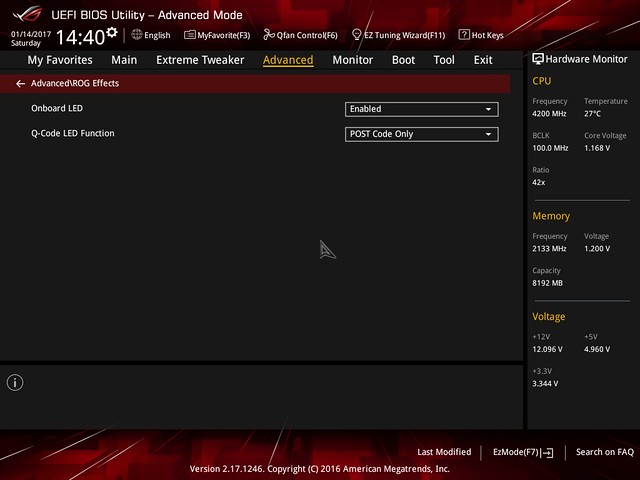

Advanced settings for SATA and M2 storages or ROG LEDs
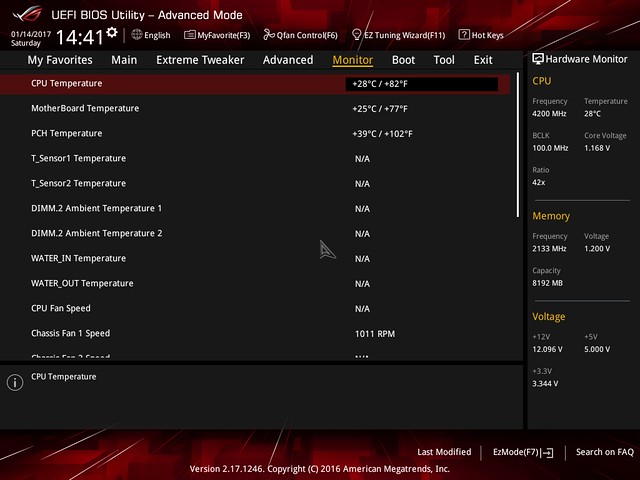
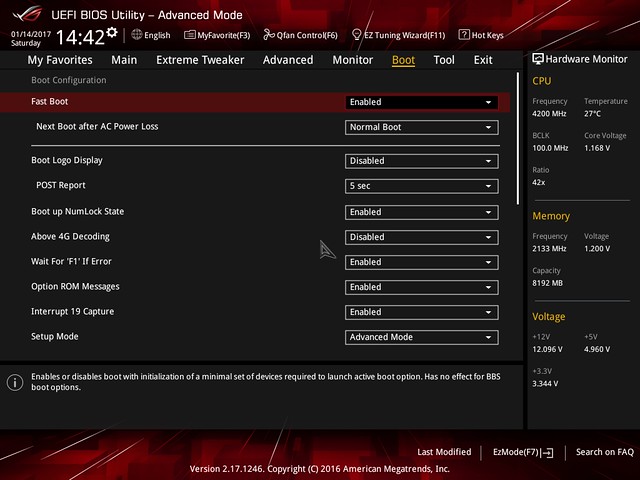
BOOT section
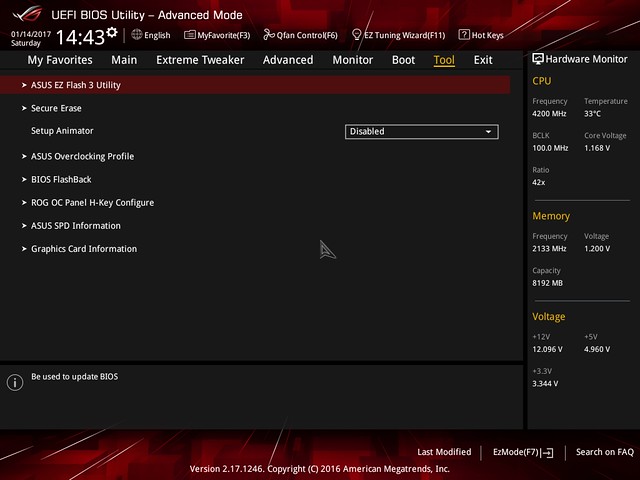
Tools

SOFTWARE
The board includes the entire package Software. Perhaps most interesting is AI Suite III with many functions. It will offer auto-tuning your PC in the performance, power, cooling, management of energy savings. And most it really works!


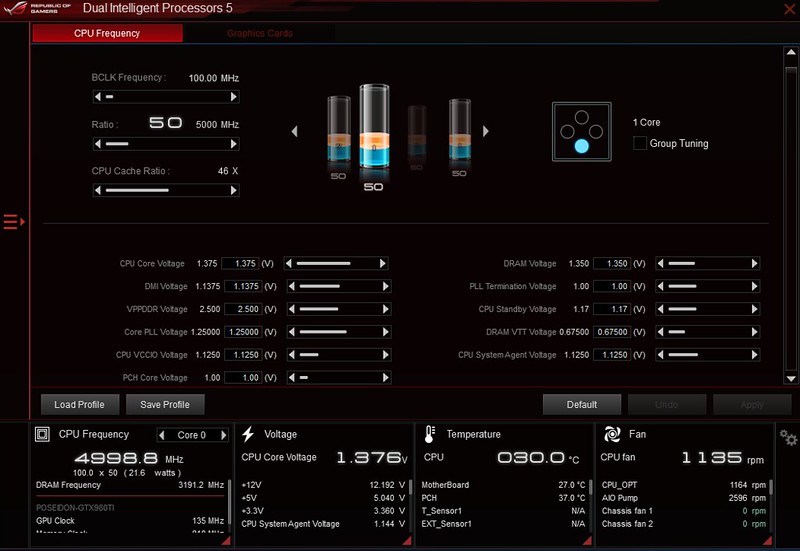

The interesting part called "turbo applications" which assigns your PC for specific tasks that you have defined frequency turbo processor.
Sonic Radar for gamers.
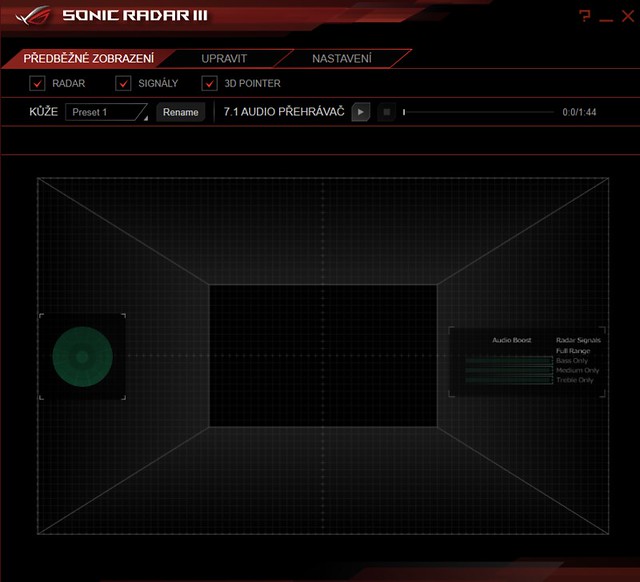
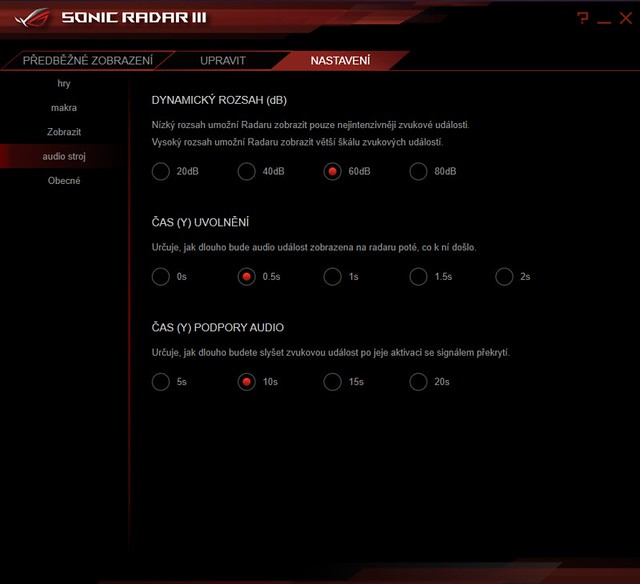
Personally for me is more practice Sonic Studio
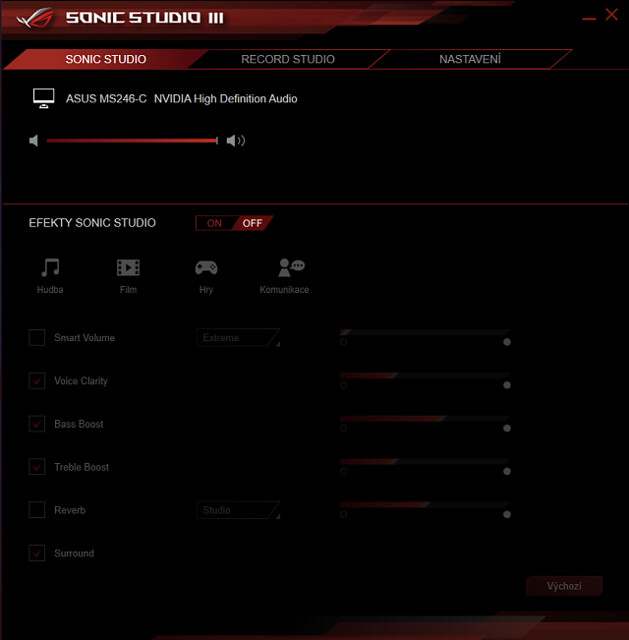

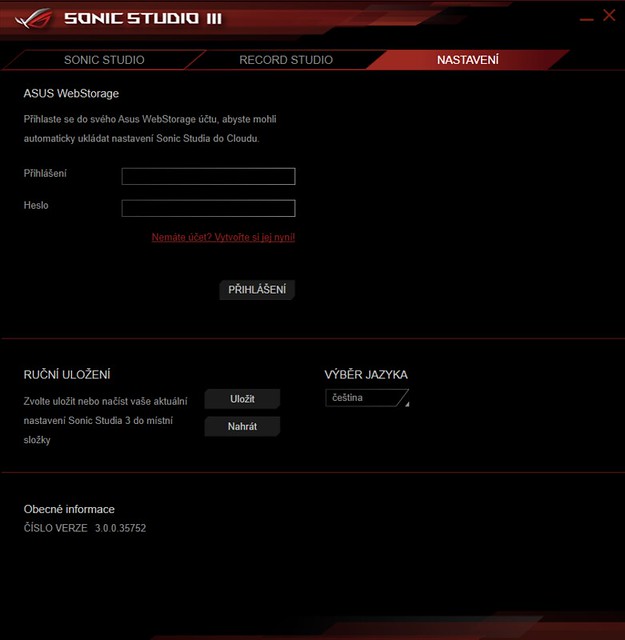
ROG Ramcache, ROG RAM Disk and new one ROG CLone Drive
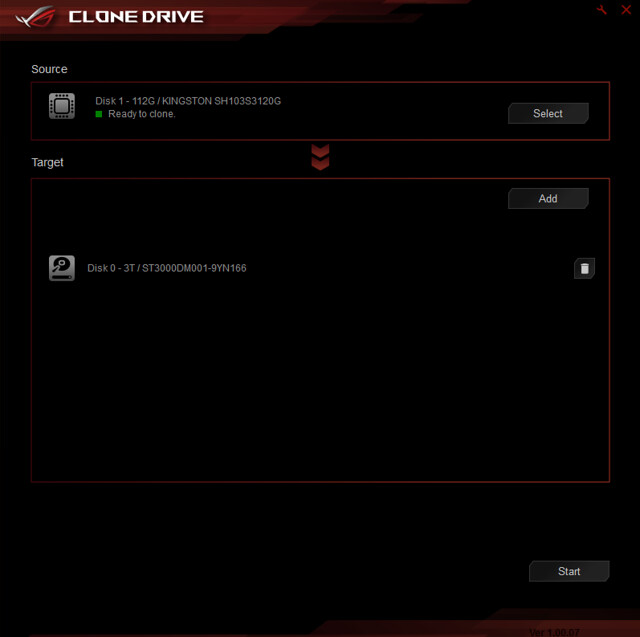
And AURA software
RGB effects -AURA
Board has literally brutal backlight option, via jumpers certain parts can be deactivated. For example, it glowing logo "Flank3r" or "Republic of Gamers".
PC AND TEST RESULTS BEFORE AND AFTER overclocking
CPU i7-7700K retail L641G series
MB Maximus IX Apex
CPU cooling AIO Silverstone TD02 Slim
RAM GSkill TridentZ 4000 MHz XMP 2x 4GB (in default tests worked at JEDEC 2133 MHZ, in OC at XMP profile)
PSU Corsair AX1200 1200W
GPU Asus Strix GTX 1050 Ti OC
SSD HyperX 3K 120GB
Windows 10 Home 64-bit

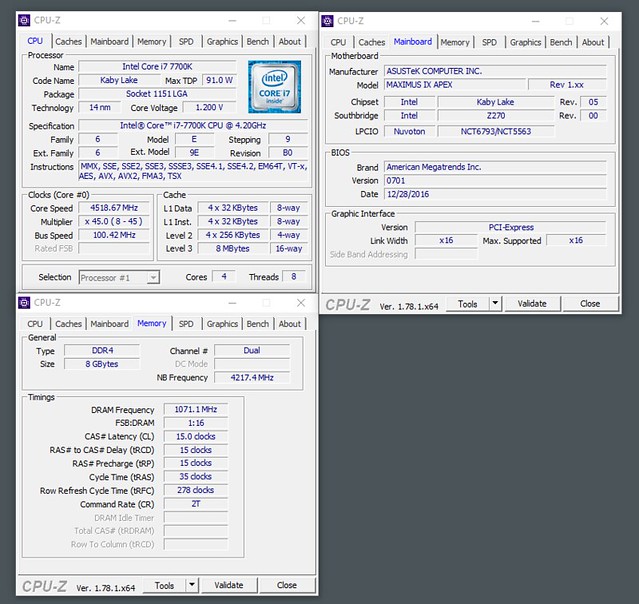
Measurements I performed in several tests for processor, already on the ground that the video card is different than last time and SSD capacity did not allow me to upload more interesting games. Maybe next time the test frequency RAM influence on performance.
The results were summarized in the table. In advance I can tell you that the CPU did not disappoint and again I got to the 5 GHz stable.
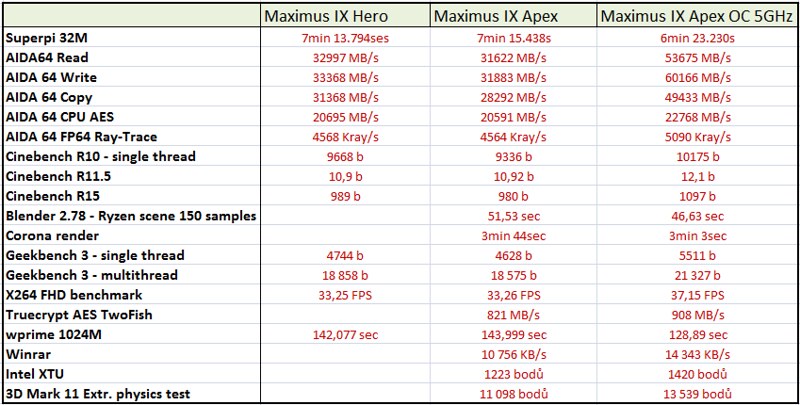
OVERCLOCKING

For overclocking I chose a stability test AIDA 64 Engineer, running about 30 minutes in stress mode (AVX ready). I was pleased that retail is still a bit better than ES sample. At 5 GHz sufficed only 1.31V in the BIOS with LLC5. But AIO setup and cooling temperatures are peaked above 80 degrees. CPU Kaby Lake is hotter than Skylake. If you are not going to delid it, I see a border around 1.35-1.375 V for vcore as the limit for long-term operation. With delid you can go on further 0.05V, perhaps even a 0.1V up. Ideally keep the temperatures in the load stress test up to 90 C at cores (or better, of course, even less).
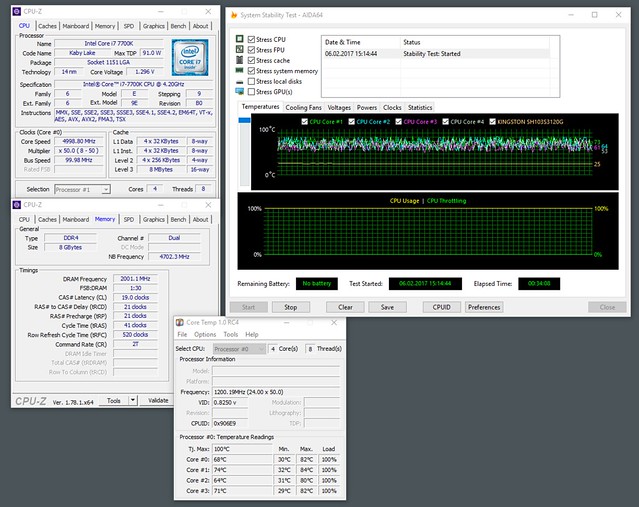
Cache was OCed together, at 4700 MHz!
Good things at APEX for Kaby Lake
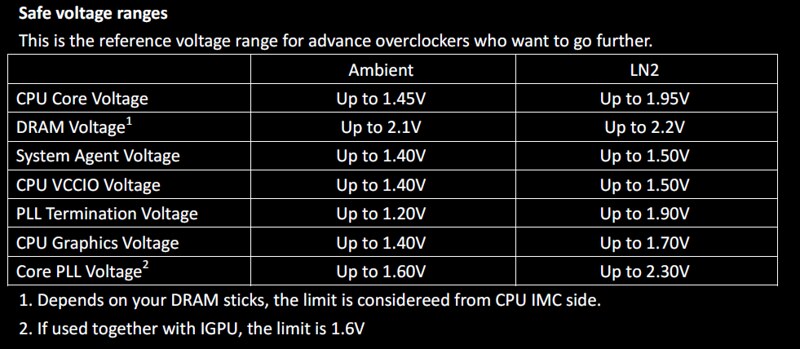
Table of safe voltage ranges when the conditions cooling according to Asus. Each piece of CPU warms slightly differently, everything is good simply adjust temperatures. Protecting CPU is at 100 C.
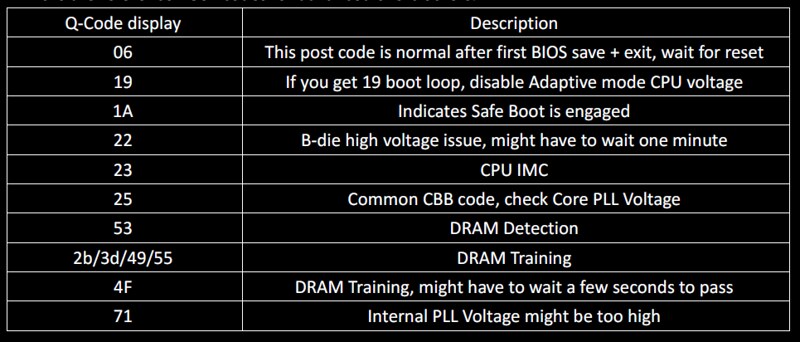
Post display codes, ideal for LN2...
Overclocking for benchmarks only
I tried then the maximum frequency for the benchmarks. First problem was the temperature, I could not CPU cool down in harder tests more than at 1.425V. This corresponds to the frequency of 4150 MHz. Maybe the CPU with a little hard work could work at 5200 MHz, but certainly not beyond, delid will be necessary ...
Cinebench R11.5 at 5152 MHz
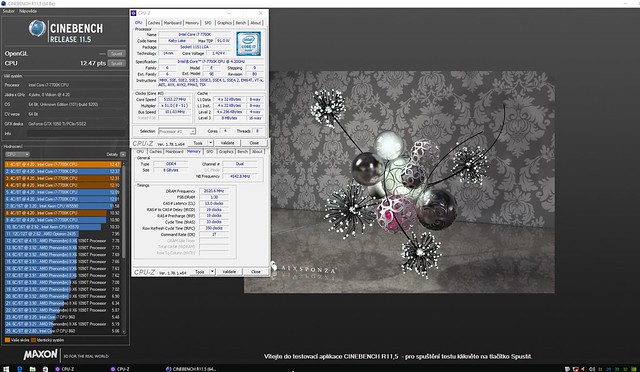
Cinebench R15 at 5152 MHz
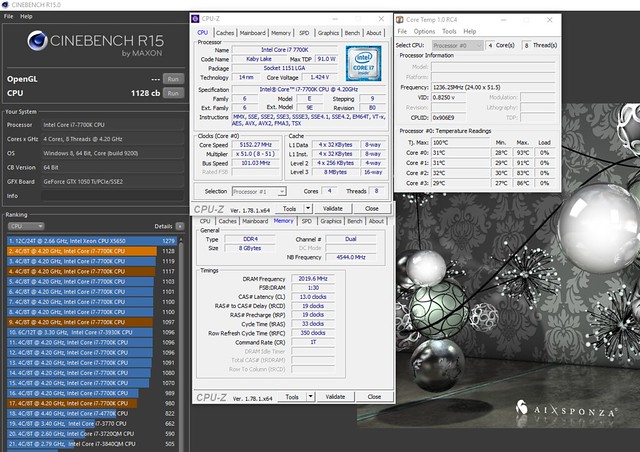
Blender "Ryzen" benchmark with 150 samples
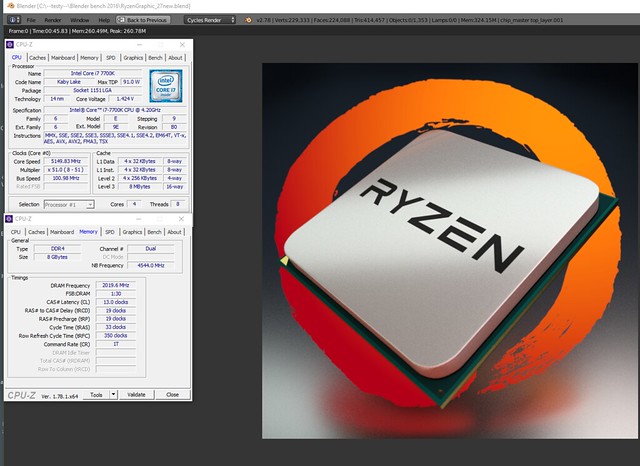
Less stress test as legacy old Superpi means I can use more voltages, 5450 MHz and Superpi 1M

CPU worked at longer Superpi 32M at 5450 MHz also!

I tried twice the frequency 5506 MHz for 1M, but in both cases the PC frozed :) I have only a photo...

Overclocking of Kaby Lake is really fun, it's fast, has a very strong IPC and manages itself very high frequency.
CONCLUSION

Like the boys at the photo from the world scene of extreme overlcocking, and I give a thumbs up :up::clap: The board is grandiose and not only because it was the first board at which seamlessly working RAM at 4000 MHz XMP profile (with noedit operating system), that has a PS2 ports, button for eliminating coldbootbug and all OC zone part, interesting DIMM.2 slot NVMe SSD in RAID, the possibility of mounting passives with mounting screws from above and further details: clap:: thumbup:
And it will be a good figure in an enthusiastic system build. Later, other comments complementing the other results during the weeks. In the granary got yet another piece i7-7700K and a third on the way. We'll see which one is really the best :)



